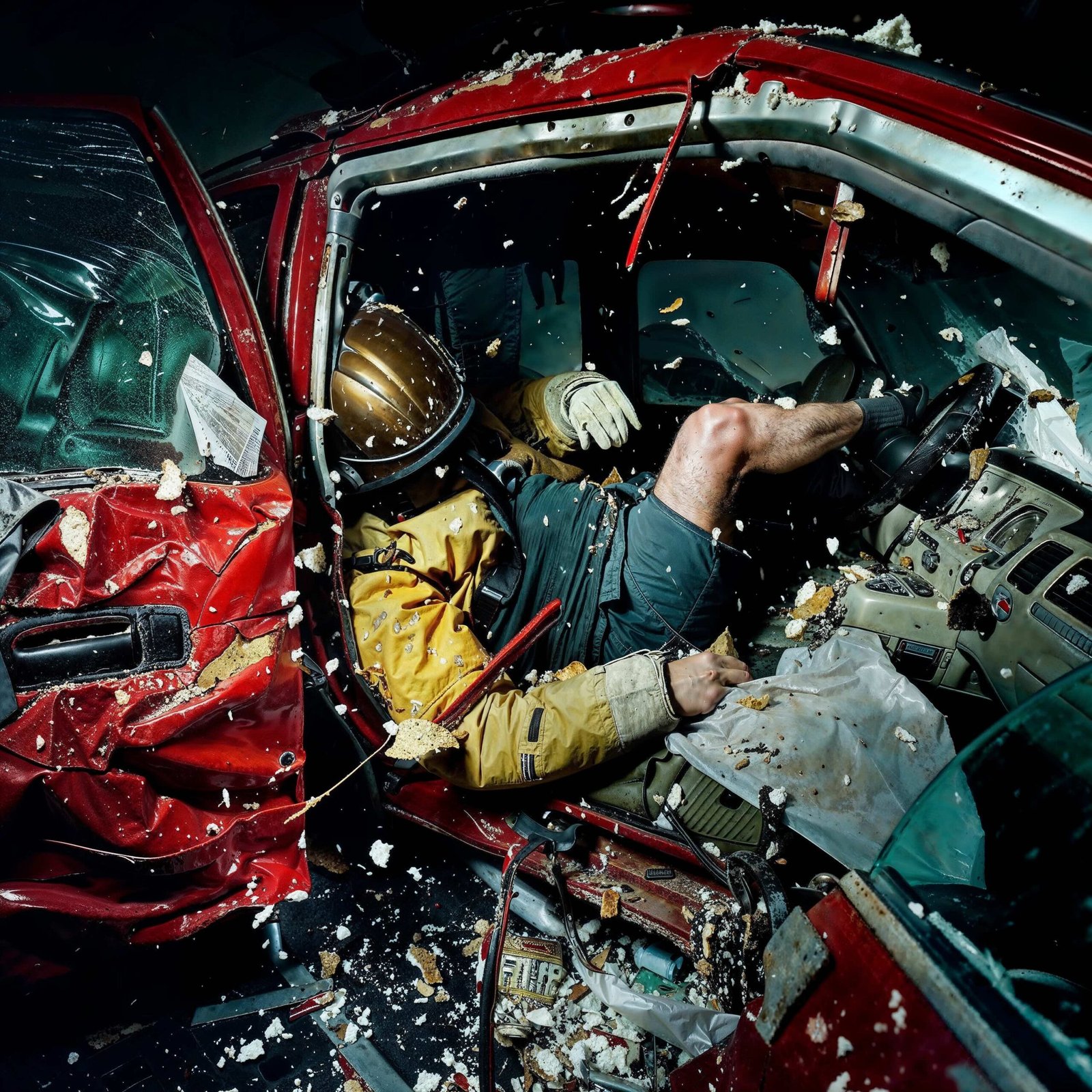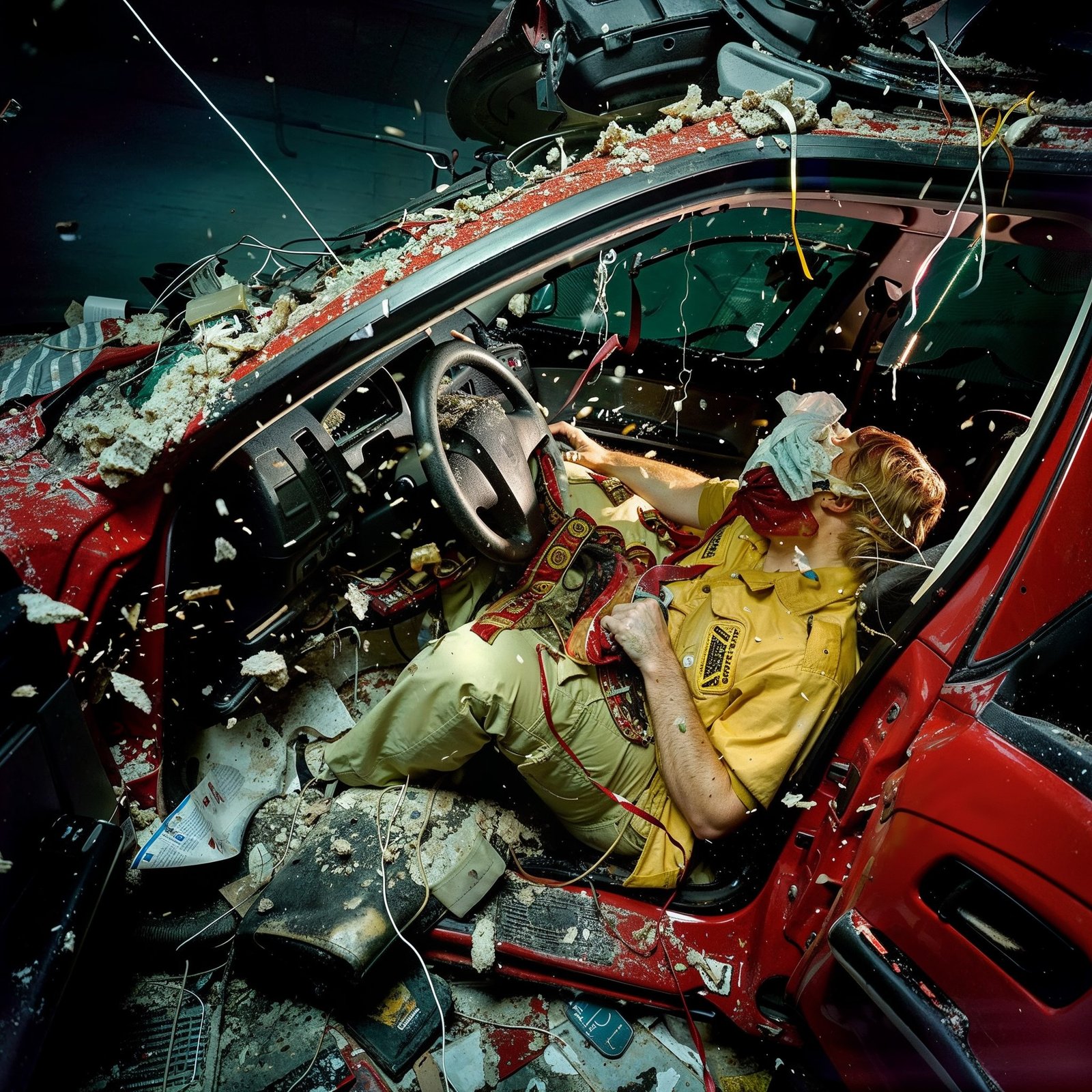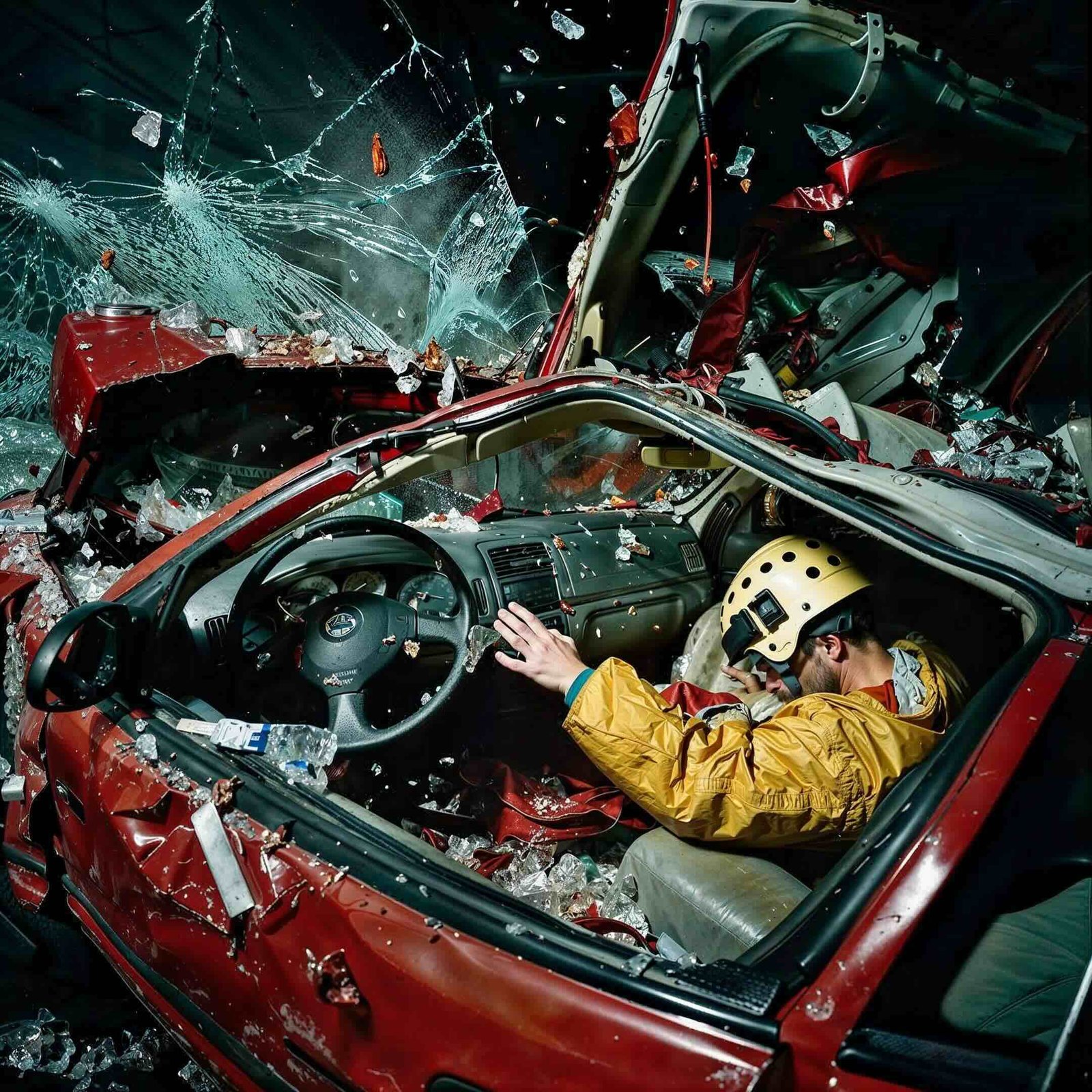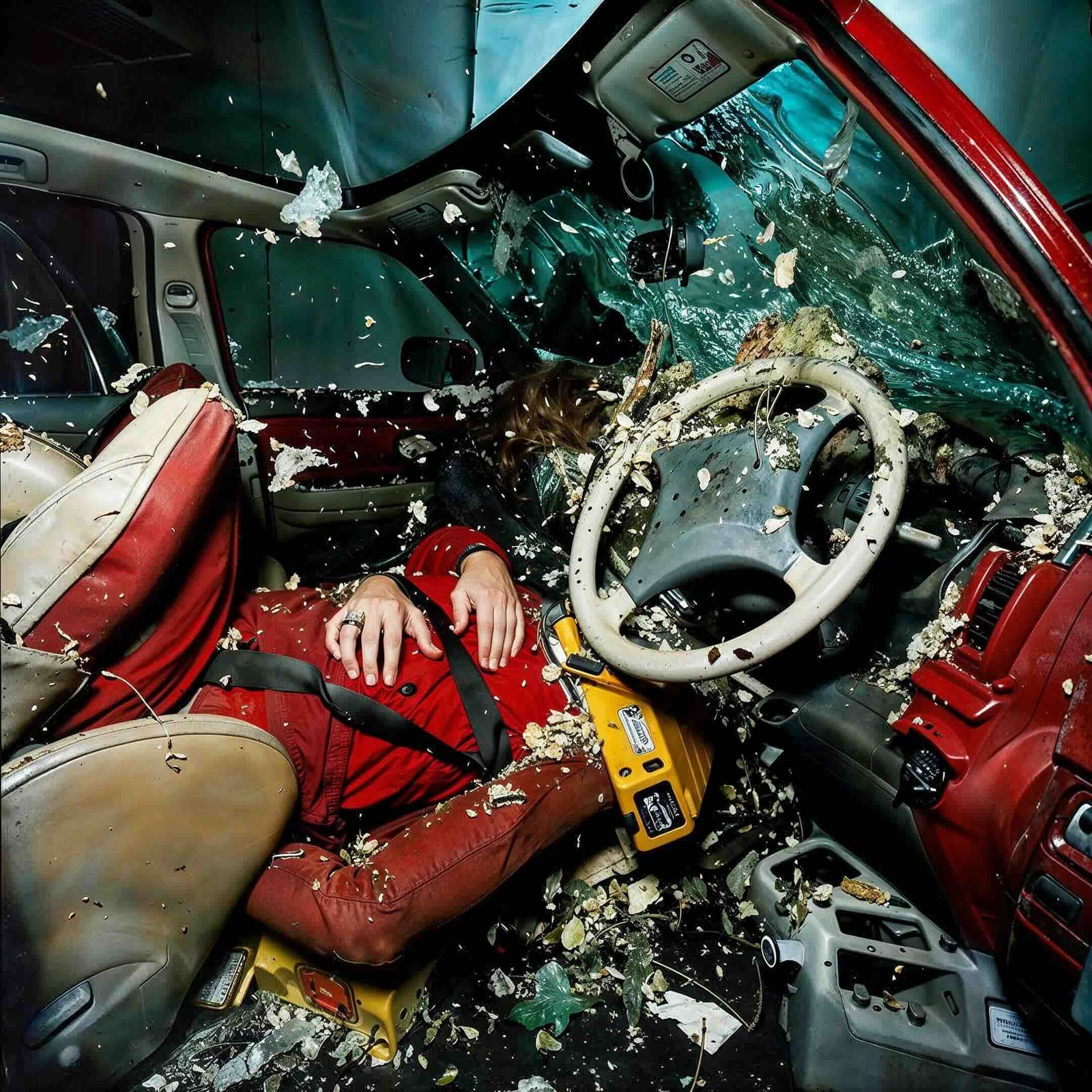Synthetic Trauma
Synthetic Trauma builds on Nicolai Howalt’s Car Crash Studies, which documented the aftermath of severe collisions through photographs of vacant car interiors.
By using AI tools to simulate the moments following a crash, these hyperreal images push Howalt’s exploration further, questioning the boundaries between reality and fabrication—a discourse made ever more relevant by the rise of AI-generated imagery.
Unlike traditional photorealism, which seeks a lifelike proximity to the subject, AI introduces a hyperreality that feels “more real than real,” while maintaining an eerie detachment.
This detachment, born of AI’s clinical precision and dispassionate perspective, allows for a controlled, even aestheticized, examination of violence that would be impossible—or ethically fraught—in real life. The precise clarity of shattered glass, suspended debris, and distorted limbs is rendered with lifelike detail, contrasted by an underlying artificiality that underscores the constructed nature of the scene.
By blurring the line between fiction and reality in images that reconstruct a traumatic experience, this work reflects on how society processes visual information and the risks of aestheticizing violence in the wake of AI image tools.




